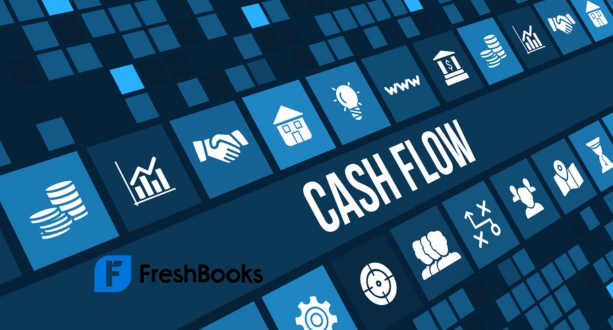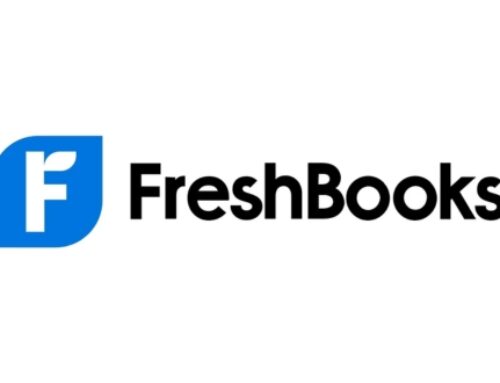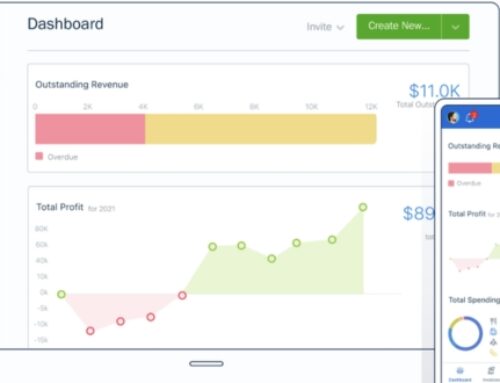Introduction:
Effective cash flow management is crucial for the success and sustainability of businesses. It involves monitoring, analyzing, and optimizing the inflow and outflow of cash within an organization. Cash flow is the lifeblood of any business, ensuring that it can meet its financial obligations, invest in growth opportunities, and weather economic uncertainties. In this context, businesses need reliable tools and systems to streamline their financial processes and gain better control over their cash flow.
Introduction to FreshBooks:
FreshBooks emerges as a leading solution in the realm of cloud-based accounting software, providing businesses with a comprehensive platform to manage their finances efficiently. As a cloud-based solution, FreshBooks offers the advantage of accessibility from anywhere with an internet connection, enabling businesses to stay on top of their financial activities on the go. Its user-friendly interface and intuitive features make it an attractive choice for businesses of all sizes, from freelancers to small and medium enterprises.
FreshBooks offers a range of features designed to simplify accounting tasks and enhance cash flow management. These features include invoicing, expense tracking, time tracking, and reporting functionalities. The invoicing feature, for instance, allows businesses to create and send professional-looking invoices to clients, ensuring timely payment and a steady cash inflow. With expense tracking, businesses can monitor their expenditures closely, identify areas for cost savings, and make informed financial decisions.
Moreover, FreshBooks facilitates real-time collaboration with accountants and team members, promoting transparency and accuracy in financial data. The software’s reporting capabilities empower businesses to generate insightful financial reports, providing a clear picture of their cash flow, profitability, and overall financial health. In essence, FreshBooks serves as a valuable ally in helping businesses navigate the complexities of cash flow management, empowering them to make informed decisions and thrive in a competitive business landscape.
Understanding Cash Flow Management:
Cash flow management is a critical aspect of financial planning for businesses, encompassing the monitoring, analysis, and control of the inflow and outflow of cash within an organization. It involves understanding how money moves in and out of a business, ensuring that there is enough liquidity to cover operational expenses, debt obligations, and capital investments. Effectively managing cash flow is essential for sustaining day-to-day operations, seizing growth opportunities, and safeguarding the overall financial health of a company.
Explanation of Cash Flow and its Significance:
Cash flow refers to the movement of money into and out of a business over a specific period. Positive cash flow occurs when the incoming cash exceeds the outgoing cash, while negative cash flow indicates that more money is leaving the business than coming in. Cash flow is a crucial metric because it provides insight into a company’s short-term liquidity and ability to meet its financial obligations. It encompasses various elements, including operating cash flow (generated from core business activities), investing cash flow (related to capital expenditures and asset purchases), and financing cash flow (involving debt and equity transactions).
Effective cash flow management ensures that a business can meet its immediate financial commitments, such as paying suppliers, employees, and other operational expenses. It also provides the flexibility to take advantage of strategic opportunities, weather economic downturns, and invest in long-term growth initiatives.
Differentiating Between Cash Flow and Profitability:
While profitability and cash flow are related, they are distinct concepts. Profitability is concerned with the overall financial health of a business, focusing on the extent to which revenues exceed expenses over a specific period. It is a measure of the company’s ability to generate profit, which is crucial for long-term sustainability. On the other hand, cash flow is concerned with the actual movement of money, regardless of accounting principles. A business can be profitable but still face cash flow challenges if there are delays in receiving payments or if significant funds are tied up in inventory or receivables.
Understanding this difference is essential because a profitable business can struggle with liquidity issues if cash flow is mismanaged. It emphasizes the importance of maintaining a balance between profitability and cash flow to ensure the availability of funds when needed.
The Impact of Poor Cash Flow Management on Businesses:
Poor cash flow management can have severe consequences for businesses of all sizes. It can lead to a variety of problems, including an inability to pay bills on time, increased debt, and potential bankruptcy. When a company faces negative cash flow, it may struggle to cover its day-to-day operating expenses, resulting in financial distress.
Additionally, inadequate cash flow management limits a company’s ability to invest in growth opportunities, innovate, and adapt to market changes. It can hinder strategic decision-making and impair the overall financial stability of the business. Investors and creditors often scrutinize a company’s cash flow position, recognizing its impact on the company’s ability to honor financial commitments and sustain operations in the long run.
Understanding and effectively managing cash flow is fundamental for the success and sustainability of any business. It requires a comprehensive approach that considers various financial aspects and involves proactive strategies to ensure a healthy balance between income and expenditure.
Features of FreshBooks:
FreshBooks is a comprehensive accounting and invoicing tool designed to streamline financial management for businesses of all sizes. One of its standout features is its user-friendly interface, making it accessible to both accounting professionals and individuals with limited financial expertise. The platform’s intuitive design facilitates easy navigation and minimizes the learning curve, allowing users to efficiently manage their finances without the need for extensive training.
In terms of cash flow management, FreshBooks provides a robust set of features. The invoicing functionality enables users to create professional-looking invoices quickly and accurately. This not only helps in maintaining a polished image for the business but also ensures prompt and accurate billing, contributing to faster payment cycles. The platform also supports expense tracking, allowing users to monitor and categorize expenses effortlessly. This feature is crucial for gaining insights into spending patterns and maintaining a clear financial overview.
Time tracking is another key feature of FreshBooks, especially beneficial for service-based businesses. Users can easily log billable hours, track project timelines, and generate accurate invoices based on the time spent on each task. This not only aids in accurate billing but also enhances transparency and accountability within the organization.
FreshBooks facilitates seamless collaboration by providing accessibility across different devices and operating systems. Whether users are on a desktop, laptop, tablet, or smartphone, they can access the platform and manage their financial tasks from anywhere with an internet connection. This flexibility is particularly valuable for businesses with remote or on-the-go workforces, ensuring that financial data is up-to-date and accessible at all times.
FreshBooks offers a well-rounded solution for accounting and invoicing, with a focus on user-friendliness and features that directly contribute to effective cash flow management. The combination of a user-friendly interface, invoicing capabilities, expense tracking, time tracking, and cross-device accessibility makes FreshBooks a versatile and valuable tool for businesses seeking efficient financial management.
Setting Up Your FreshBooks Account:
Setting up your FreshBooks account is a straightforward process that involves several key steps. In this step-by-step guide, we’ll walk you through the essential tasks to ensure a smooth and efficient onboarding experience.
Step 1: Account Creation
The first and foremost step is to create your FreshBooks account. Navigate to the FreshBooks website and click on the “Sign Up” or “Get Started” button. Provide the required information, including your email address, business name, and password. Once you’ve filled in the necessary details, follow the prompts to verify your account and log in for the first time.
Step 2: Configuring Business Settings
After successfully creating your account, it’s crucial to configure your business settings to tailor FreshBooks to your specific needs. Access the settings menu, where you can input details such as your business address, contact information, and tax preferences. Accurate business settings are vital for precise financial tracking and reporting, so take the time to review and adjust these parameters according to your business requirements.
Step 3: Financial Tracking Setup
To ensure accurate financial tracking, dive into FreshBooks’ financial settings. Specify your default currency, choose your preferred date format, and set up relevant tax rates. These details play a crucial role in generating invoices, expense reports, and financial statements that align with your business’s financial structure. Make sure to double-check these settings periodically to accommodate any changes in your business operations.
Step 4: Integrating Bank Accounts and Credit Cards
FreshBooks allows seamless integration with your bank accounts and credit cards, streamlining the expense-tracking process. Linking your financial accounts provides real-time updates on transactions, helping you maintain an up-to-date financial overview. Navigate to the integration section within FreshBooks, follow the prompts to connect your accounts securely, and grant the necessary permissions. This integration ensures that all income and expenses are automatically recorded, minimizing manual data entry and reducing the risk of errors.
Setting up your FreshBooks account involves a series of carefully orchestrated steps. From creating your account and configuring business settings to integrating bank accounts and credit cards, each step contributes to a comprehensive financial management system. By following this step-by-step guide, you’ll establish a solid foundation for accurate and efficient financial tracking, allowing you to focus more on growing your business.
Invoicing and Billing:
Invoicing and billing play a crucial role in managing the financial aspects of a business. One popular tool for streamlining this process is FreshBooks. FreshBooks offers a user-friendly platform that allows businesses to create professional invoices efficiently.
The automated invoicing features of FreshBooks make the invoicing process more efficient and less time-consuming. Automation helps reduce manual errors and ensures that invoices are generated promptly, saving valuable time for business owners and their teams. This is particularly beneficial for businesses that deal with a high volume of transactions and need a reliable system to handle their invoicing needs.
One of the standout features of FreshBooks is its capability to customize invoices. Businesses can personalize their invoices to align with their brand identity, creating a more professional and polished image. Customization options include adding company logos, adjusting color schemes, and incorporating specific details relevant to the business. This not only enhances the visual appeal of the invoices but also reinforces brand consistency.
Additionally, FreshBooks facilitates recurring billing, making it easier for businesses with subscription-based models or clients on retainer. Setting up recurring billing within the platform automates the process of invoicing regular clients, ensuring a steady and predictable cash flow. This feature is especially beneficial for service-based businesses that bill clients on a recurring basis, such as monthly retainers or subscription services.
FreshBooks provides a comprehensive solution for businesses seeking efficient and customizable invoicing and billing processes. Its user-friendly interface, automated features, and ability to tailor invoices to suit specific business needs make it a valuable tool for improving financial management and enhancing overall professionalism.
Expense Tracking and Management:
Expense Tracking and Management is a critical aspect of financial stewardship for businesses and individuals alike. FreshBooks, a versatile accounting and invoicing software, excels in simplifying this complex task. The platform provides a user-friendly interface and a range of features to streamline the process of tracking and managing expenses.
One key feature that sets FreshBooks apart is its seamless integration with bank accounts. By connecting your bank accounts to FreshBooks, the software can automatically categorize expenses. This automation not only saves time but also minimizes the risk of manual errors in expense categorization. Users can enjoy the convenience of having their transactions sorted into relevant categories without the need for manual input, ensuring accuracy and efficiency in expense tracking.
A notable advantage of FreshBooks lies in its ability to generate comprehensive expense reports. These reports offer users a detailed overview of their financial activities, providing valuable insights into spending patterns and budget allocation. With just a few clicks, users can access visually appealing and informative expense reports, helping them make informed decisions about their financial management.
The significance of generating expense reports goes beyond mere documentation. These reports serve as a powerful tool for gaining a deeper understanding of financial health. By visualizing expenses in an organized manner, users can identify trends, pinpoint areas of overspending, and make informed decisions to optimize their financial strategy. FreshBooks’ commitment to simplifying expense tracking and empowering users with insightful reports contributes to its reputation as a valuable asset for efficient financial management.
Time Tracking and Project Management:
Time Tracking and Project Management are critical components for businesses aiming for efficiency and success. In this context, let’s delve into the functionalities of FreshBooks, focusing on its time tracking capabilities.
FreshBooks offers robust time tracking features that empower businesses to monitor and optimize their resource utilization. Through its user-friendly interface, users can easily log and track the time spent on various tasks and projects. This functionality is particularly valuable for service-based businesses where accurate time tracking is essential for client billing and internal project management.
One standout feature of FreshBooks is its seamless integration of time tracking with invoicing. By directly linking the time spent on specific tasks to client invoices, FreshBooks ensures accuracy and transparency in billing. This integration streamlines the invoicing process, eliminating the need for manual calculations and reducing the likelihood of errors. This not only saves time for businesses but also enhances client trust by providing a detailed breakdown of services rendered.
In addition to time tracking and invoicing, FreshBooks offers robust project management tools. Users can efficiently organize and oversee their projects, ensuring that tasks are completed on time and within budget. The platform allows for the assignment of tasks to team members, facilitating collaboration and accountability. Real-time tracking of project progress ensures that businesses stay on top of their timelines and can make informed decisions to address any potential delays or issues.
Another noteworthy aspect of FreshBooks’ project management capabilities is its ability to track associated expenses. Businesses can monitor and categorize expenses related to specific projects, providing a comprehensive overview of project costs. This feature is invaluable for budgeting and financial planning, allowing businesses to assess the profitability of each project and make data-driven decisions for future endeavors.
FreshBooks excels in providing a holistic solution for Time Tracking and Project Management. Its user-friendly interface, seamless integration of time tracking with invoicing, and comprehensive project management tools make it a valuable asset for businesses looking to enhance efficiency, accuracy, and overall project success.
Budgeting and Forecasting with FreshBooks:
Budgeting and forecasting are crucial aspects of financial management for any business, and FreshBooks provides a robust platform to streamline these processes.
Budget Creation with FreshBooks:
FreshBooks facilitates efficient budget creation by offering a user-friendly interface and intuitive tools. Users can input their financial goals, allocate resources, and set spending limits within the platform. The software allows for the categorization of expenses, making it easy to track and manage different aspects of the budget, from operational costs to marketing expenses. With FreshBooks, businesses can create detailed and comprehensive budgets that serve as a roadmap for financial decision-making.
Forecasting Future Cash Flows:
One of the key strengths of FreshBooks lies in its ability to leverage historical data for forecasting future cash flows. By analyzing past income and expenditure patterns, the platform can generate accurate predictions of future financial trends. This forecasting feature is invaluable for businesses as it enables them to anticipate potential cash shortages or surpluses. Armed with this information, companies can make informed decisions on resource allocation, investment opportunities, and debt management to ensure financial stability and growth.
Adjusting Strategies Based on Budget Variances:
FreshBooks empowers businesses to stay agile by providing real-time insights into budget variances. Users can compare actual financial performance against the budgeted figures, identifying areas where there are discrepancies. Whether it’s overspending in a specific department or unexpected revenue growth, FreshBooks allows businesses to adjust their strategies promptly. This adaptability is crucial for maintaining financial health and achieving long-term goals. For instance, if a company identifies a positive budget variance, it may choose to allocate additional funds to marketing initiatives or invest in expansion opportunities. Conversely, if there is a negative variance, adjustments can be made to cut costs or explore new revenue streams.
FreshBooks plays a pivotal role in the budgeting and forecasting processes for businesses. It simplifies budget creation, enhances forecasting accuracy, and enables proactive decision-making based on real-time financial data. By leveraging FreshBooks, organizations can navigate the dynamic financial landscape with confidence, ensuring they are well-positioned for success.
Tips for Effective Cash Flow Management:
Effective cash flow management is crucial for the financial health and sustainability of any business. One fundamental tip is to create a detailed cash flow forecast that outlines anticipated inflows and outflows. This proactive approach enables businesses to anticipate potential challenges and make informed decisions. Monitoring and updating this forecast regularly ensures accurate insights into the company’s financial standing.
Another essential practice is to set clear payment terms with customers and suppliers. Communicate expectations regarding invoice due dates and follow up promptly on late payments. Offering incentives for early payments or implementing late payment fees can encourage clients to adhere to the agreed-upon terms, positively impacting cash flow.
Diversifying income sources can also contribute to stable cash flow. Relying on a single revenue stream increases vulnerability, so exploring new markets or expanding product/service offerings can provide additional income sources. Businesses should carefully analyze their customer base and market trends to identify potential growth opportunities.
Strategies for Handling Late Payments and Overdue Invoices:
Late payments and overdue invoices can significantly disrupt cash flow, requiring businesses to employ effective strategies for resolution. Implementing a clear and consistent invoicing process is essential. Ensure that invoices are accurate, detailed, and sent promptly. Using invoicing software, like FreshBooks, can automate this process, reducing the chances of errors and delays.
Establishing a proactive approach to late payments involves regular communication with clients. Sending friendly reminders before the due date and following up promptly on overdue payments demonstrates the seriousness of the terms and encourages timely settlements. If challenges persist, businesses may consider offering flexible payment plans or negotiating terms to accommodate clients facing financial difficulties.
In extreme cases, when efforts to collect payments fail, businesses may need to escalate the matter by seeking legal assistance or engaging collection agencies. However, this should be a last resort, as it can strain relationships with clients. Open and transparent communication throughout the process is key to maintaining positive business relationships.
Leveraging FreshBooks Features for Proactive Cash Flow Management:
FreshBooks, as an accounting and invoicing software, offers a range of features that businesses can leverage for proactive cash flow management. Utilizing the platform’s invoicing capabilities helps streamline the process, reducing the likelihood of errors and delays. Automatic invoice reminders and recurring billing options further contribute to timely payments.
The reporting and analytics tools in FreshBooks provide valuable insights into the financial health of a business. Users can generate cash flow statements, monitor receivables and payables, and track trends over time. This data empowers businesses to make informed decisions, identify areas for improvement, and develop effective strategies for maintaining a healthy cash flow.
Integration with payment gateways allows for convenient online payment options, expediting the collection process. Businesses can also set up expense tracking to monitor and manage outgoing cash flows more efficiently. By fully leveraging FreshBooks’ features, businesses can not only streamline their financial processes but also enhance their overall cash flow management strategies.









